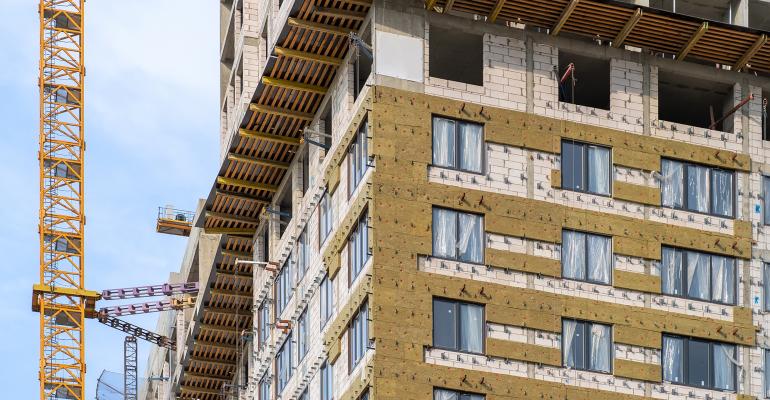The past two years have brought with them myriad disruptions to the multifamily development pipeline including delays caused by the COVID-19 pandemic and ongoing issues with the global supply chain. None of that has cleared up in the early part of 2022 and apartment developers are still struggling to finish their projects on time. These delays are scrambling their construction schedules and cutting into their returns.
Construction delays started two years ago when the first wave of coronavirus infections closed workplaces around the world—including some construction sites and many factories creating materials for multifamily projects.
Delays are likely to continue even if the number of coronavirus cases continues to decline this spring. A shortage of labor has snarled deliveries and made it hard to predict with any certainty when needed materials will get to job sites.
“Supplies of most goods should improve… but delivery times remain highly uncertain,” warns Ken Simonson, chief economist for the Associated General Contractors of America n(AGC), headquartered in Washington, DC. “If coronavirus is really on the wane, factory shutdowns should end. But the outlook for getting enough truckers to deliver those materials remains murky.”
Delays strike apartment projects
Many apartment developments now underway are suffering some kind of a delay.
“A typical apartment project might take 10 to 20 percent longer to complete than it did a couple years ago,” says Jay Parsons, vice president and head of economics and industry principals for RealPage.
Worse—these delays are unpredictable. “Contractors frequently tell me of deliveries coming sooner than expected… though not so frequently as deliveries that are delayed, often long delays they learn of shortly before the due date,” says Simonson.
These delays are affecting all kinds of construction materials—from wood to steel to concrete. Three-quarters (72 percent) of construction projects overall were delayed in 2021 because of the pandemic, according to the Hiring and Business Outlook Survey released in January by the AGC and Sage Construction. All kinds of construction projects were included in the survey. “We didn't ask what project types or the specific reason(s) for delay,” says Simonson.
Many of these delays were serious. Almost a third (32 percent) of these contractors said they had a project postponed or canceled in 2021 and not rescheduled as of December 2021.
Delays can expose apartment developers to extra financing costs. Every day that an apartment sits unfinished because of a construction delay is another day that the developers must pay interest on their construction loans without earning income from rent.
These extra financing costs will become even harder to bear if interest rates begin to rise this year, because the majority of construction loans are floating rate. “Rising interest rates might trigger financing problems for construction,” says Xiaodi Li, an Economist at Moody's Analytics.
Apartment developers are still being surprised by new delays in deliveries of material as the factors causing those delays change. “Delays can happen at any stage of the supply chain,” says Simonson.
In the first months of 2022, some factories were closed again by the latest wave of infections caused by the Omicron variant of the coronavirus. But materials were also taking longer to be delivered because of an overburdened global logistics chain.
“Ships wait offshore—on the East Coast now as well as at the port of Los Angeles Long Beach—for varying lengths of time because the ports are full of containers that can't move to their next destination due to shortage of chassis, truckers or rail crews,” says Simonson.
It’s not clear when these delays will finally clear up. “Very difficult to predict at this point when we’ll see real improvement across the board,” says Parsons. “There’s no consensus view.”
New problems might even make the latest set of delays even worse. “A West Coast longshore workers strike this summer is a strong possibility. That would shut down the movement of freight from Asia,” says Simonson.
Developers manage the dangers of delays
“Developers are adjusting their timelines to try to be more realistic given the challenges in securing labor and materials,” says Parsons.
Also, more than two-thirds (67 percent) of contractors they are buying materials more quickly after they win contracts to try to avoid these problems, according to the AGC survey. Nearly two-thirds (61 percent) of contractors say they have turned to alternative suppliers. Nearly half (48 percent) switched to alternative materials. And nearly a quarter (23 percent) are even stockpiling likely materials before they even win contracts.
“All of these steps require a developer's acquiescence or participation,” says Simonson. Investors and developers may need to provide earlier financing, storage space for materials or adjustments to design or phasing of projects.





